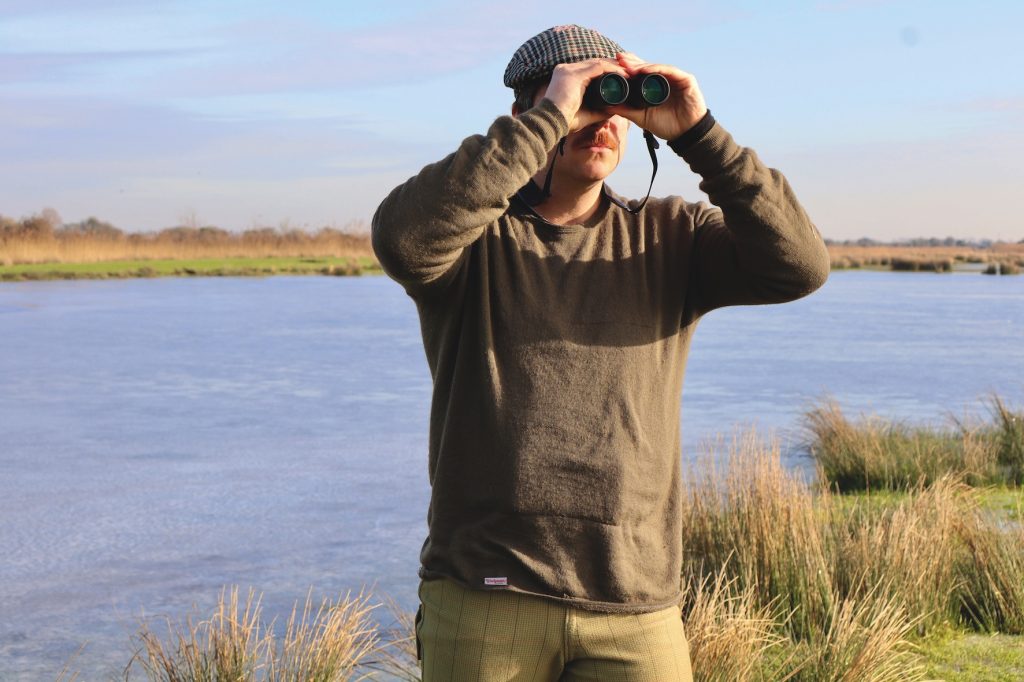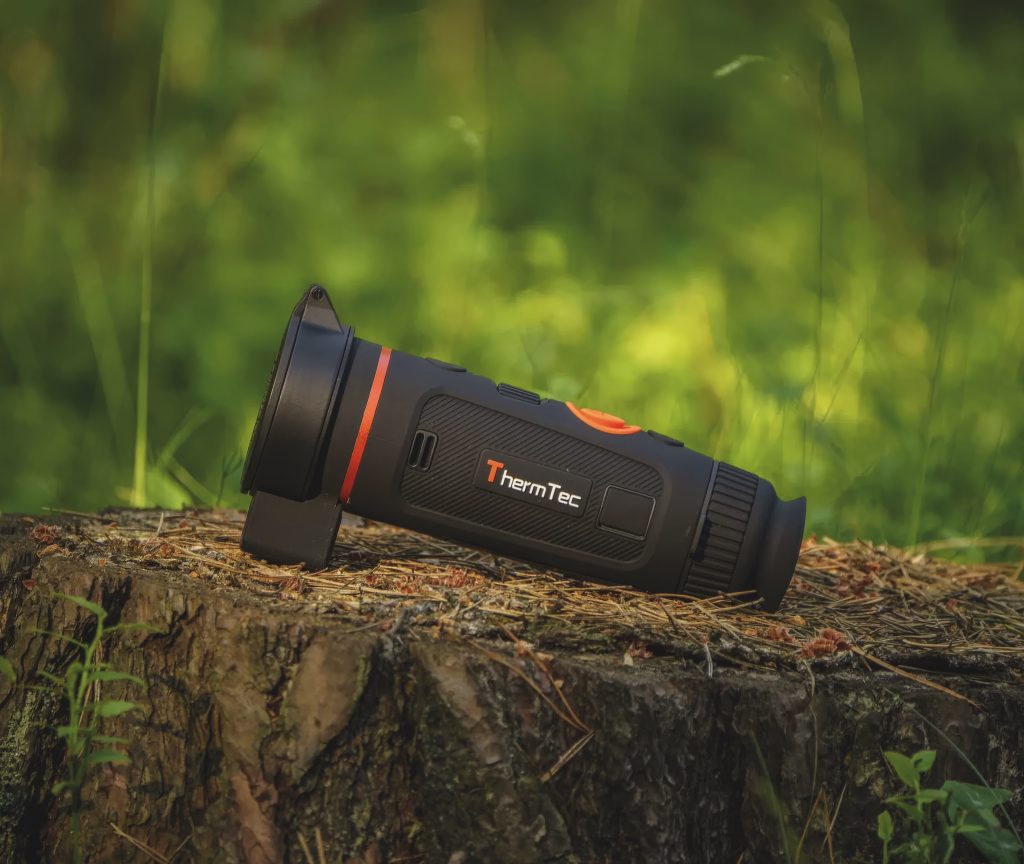Win CENS ProFlex DX5 earplugs worth £1,149 – enter here
Vintage rifles can still be viable
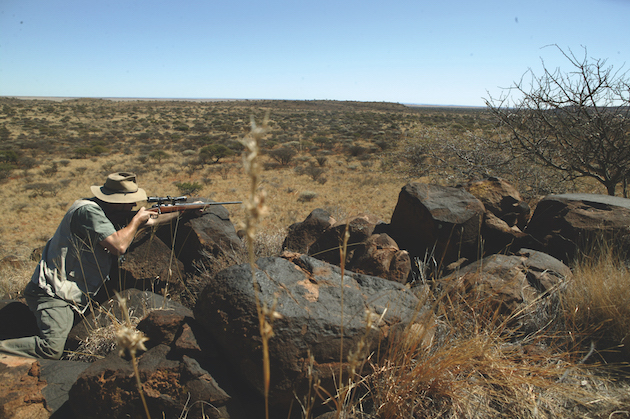 P.Quagliana. SEPT 2005. A vantage point offered a chance for Charles
used 27 0ct 05
Usd 24 april 8 hunter friend
Usd 14 nov 12 Q&A
Usd SG dec 15 george wallace
P.Quagliana. SEPT 2005. A vantage point offered a chance for Charles
used 27 0ct 05
Usd 24 april 8 hunter friend
Usd 14 nov 12 Q&A
Usd SG dec 15 george wallace
There are historical and legal reasons for the decline in interest in vintage rifles in this country. When I was a child, to have a modest collection of sporting and military rifles was not an uncommon thing for a country gentleman. My father had only a passing interest, but owned more than a dozen. My primary school headmaster had more than 100. I know this, because he used to bring them to school to show us.
Sadly, for most people, the casual ease with which mild interest could be nurtured into a hobby and perhaps even grow into a passion has been stifled by increasingly restrictive legislation. It is hard to develop an interest in anything if you can’t have it and rarely see it. The fact is, a barrier to the ownership and use of vintage rifles like all firearms now, stands firmly between them and us.
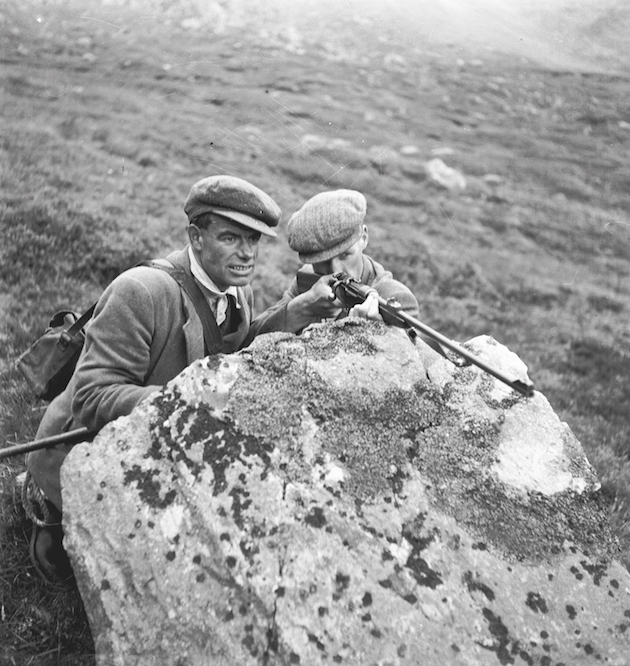
11th September 1951: Deer-stalker Jim Turnbull takes aim during a deer-stalking expedition in Inverness-shire.
The firearms we are allowed now are limited in number. If you buy a new .22 rimfire or another .308 stalking rifle, you will probably have to sell your current one first. Given that most people who use a rifle will consider it a serious piece of kit, if they are allowed only one for each purpose, they will probably make sure it is exactly what they want. That means buying new.
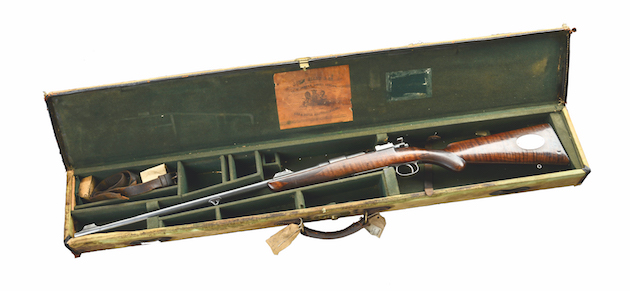
Legislation is now a barrier to keeping and using vintage guns, such as this Rigby
The opportunity for a special occasion rifle or an occasional, limited-use hunting companion has been denied to our generation. Imagine telling the police you would like a .303 Martini-action converted service rifle, from about 1880, because you would find it amusing to take the odd roe or fox with it when you are in the mood. Our freedoms in this country have been curtailed to the point that this is simply not an option.
The US, New Zealand and Canada are good examples of western democracies where there are few, if any, restrictions on sporting rifles. If you are a normal person of good character — not a felon — you can have what you like and largely use it as you see fit. In these countries, it is more common to see enthusiasts putting old rifles to good use, bagging anything from feral hogs to moose or wild turkeys. Because our former colonial cousins are allowed to use older rifles, they have become expert in understanding them and creating modern loads to make them effective hunting tools, despite there being little or no commercially loaded ammunition for many of them.
Flights of fancy aside, however, what options still exist for using vintage rifles if you live in the UK? Let us suppose you have a small-bore to shoot vermin, a deer rifle for roe stalking and a more punchy one for red stags. You take a trip to Africa once every few years to shoot plains game and fancy adding buffalo to your bucket list in a year or two.
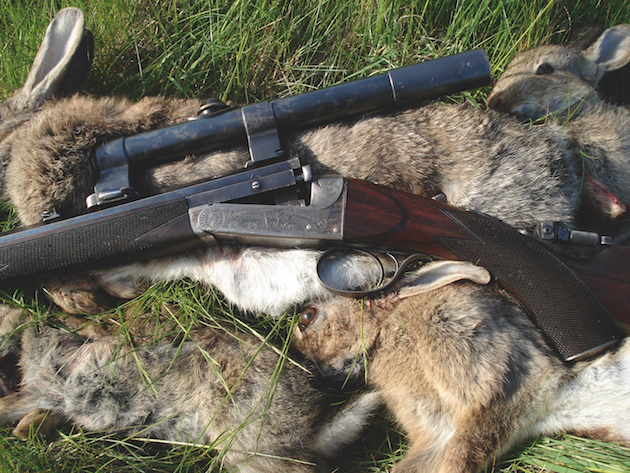
The use of .300 Rook rifles declined after World War II as ammunition was no longer widely available
Small calibres
Before the .22 rimfire became all-conquering, our grandfathers and great-grandfathers still managed to control the rooks, rabbits and squirrels around the farm with small-calibre rifles.
What they usually used were small centrefire, single-barrelled rifles that broke at the breech like a shotgun. Common calibres, such as .300 Rook, were reliably accurate to 100 yards or so. However, the ammunition ceased to be available commercially after World War II and the rifles fell into disuse or were converted to a modern alternative, mostly into .410 shotguns or .22 Hornets or .22 rimfires, which is done by barrel lining.
Now, if you fancy a beautiful old Rook rifle to take the place of your BRNO .22, you have the option of getting one that has been converted (by Parker-rifling) to the same calibre.
If you are a purist, you can use the open sights. Some come with a peep sight, or have a period scope fitted. In terms of quality and pride of ownership, these beautiful vintage rifles kick modern, stainless steel and laminate bolt-actions firmly into touch.
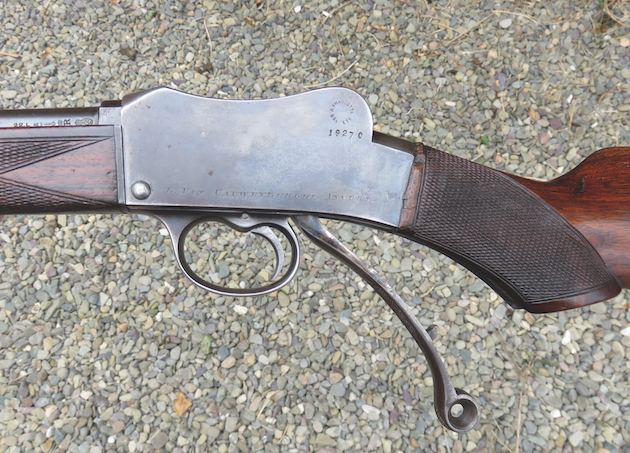
The mini Martini .22 rimfire is renowned as robust, accurate and aesthetically pleasing
A slightly more robust, cheaper option would be a miniature Martini, again in .22 rimfire. Companies such as BSA and Greener made very high-quality examples of these, which are both robust and accurate. They are also aesthetically pleasing and faster to reload than you might think, especially in the dark, when a magazine rifle is a pain. With the tipping-block action, you simply work the lever, pop a round from your pocket directly into the chamber and close the lever.
Vintage roe stalker
The powers that be stitched us up, in many respects, with the legislation that determines with what kind of cartridges we can shoot our native deer species. Many very effective rifle and cartridge combinations that, over the decades, accounted for untold thousands of deer were suddenly deemed not up to the job. Patently ridiculous, in my opinion.
When choosing a rifle for roe stalking in England, you must ensure the cartridge performs in excess of the somewhat arbitrary figures set in law. That means a bullet bigger than .240, showing 1,700ft/lb muzzle energy. In Scotland, the bullet must exceed 50-gr, but the muzzle energy requirement is reduced to 1,000ft/lb and muzzle velocity must exceed 2,450fps. Scottish roe must be different.
To beat the restrictions, I would suggest the gentleman’s rifle of the inter-war years — the Mannlicher Schönauer in 6.5×54. The rotary magazine is a true thing of beauty, and the stutzen full stock and the short 19in barrel make it effortless to carry as well as fast on to its target. No longer legal for fallow — unless you stoke up some home loads — it passes muster for roe and would be my first recommendation for some woodland stalking.
Hill stags
The Victorians considered the .450 BPE, typically launched from an Alex Henry falling-block rifle, the perfect medicine for red deer in the Highlands. The gun rooms of Scottish castles were once full of them. Today’s descendants of those deer, on the very same hillsides, are no more resistant to hot lead nor difficult to stalk than their ancestors.
However, for hill stags today, you need to throw a minimum of 100-gr at 2,450fps and show 1,750ft/lb muzzle energy to be deemed adequately equipped to shoot red deer.
What I would recommend is a vintage Rigby Mauser .275. Popular from before World War I, these rifles are still made by the London firm and differ little from the originals.
A vintage model with modern ammunition is eminently practical and could be bought for between £1,500 and £3,500.
Falling block
Few African countries have minimum rifle calibre stipulations for plains game. Most people consider a rifle you would use on red deer or driven boar ideal for animals such as warthog, impala and kudu.
This is where the .450 (3¼in) BPE Alex Henry falling-block rifle, now illegal in Scotland, comes into play. With a 350-gr bullet it delivers 2,150fps and 2,340ft/lb energy. So it fails by about 100fps in speed.
That will not stop it killing any African plains game you care to point it at, out to 400 yards. Sportsmen in the past used this combination to bag hundreds of elephants, rhino and lions.
The Alex Henry rifles built during the last decade of the 19th century are exquisitely executed, perfectly balanced and delightfully engineered. It is hard to imagine anything hand-built that is so ruthlessly efficient.
Versatile vintage rifles
The .375 is considered the minimum calibre for dangerous game and there are no restrictions regarding bullet type, size, speed and so on.
The .375 Holland & Holland Magnum was launched in 1912, so rifles qualifying as vintage can be had in that most versatile of all chambering. However, our forefathers liked to get close to their dangerous game and hit them hard with big bullets.
The sport is in the stalking, holding your nerve at close quarters and handling the pressure well enough to put a heavy bullet in the right place when a wrong decision or bad move could get you killed.
Dangerous game is not dangerous when it is 80 yards away and shot using a scoped rifle from a static position. If you are going to bother, do it properly. The ideal is a .577 Nitro Express. To make it affordable, get a Webley-type long-bar boxlock with a screw grip and not much engraving. It does not matter whether it was retailed by Rigby, Lyon & Lyon, W J Jeffery or Army & Navy.
The .577 NE emerged in about 1900. From personal experience, I can attest to the fact that, when sneaking through the long grass with big beasts around you, nothing gives you more confidence.
As for suitable ammunition, Kynoch loads ‘nitro for black’ alternatives to the rare originals or, if you are so minded, there is a lot of data available on home-loading and regulating your rifle from modern experts such as Graeme Wright, the author of Shooting the British Double Rifle: A Modern Guide for Load Development and Use.
With overseas hunters still favouring many calibres considered unfashionable or obsolete here, some manufacturers still provide cartridges for the likes of the Mannlicher Schönauer 6.5×54 and the .275 Rigby. Go on, dare to be different.
Related Articles
Get the latest news delivered direct to your door
Subscribe to Shooting Times & Country
Discover the ultimate companion for field sports enthusiasts with Shooting Times & Country Magazine, the UK’s leading weekly publication that has been at the forefront of shooting culture since 1882. Subscribers gain access to expert tips, comprehensive gear reviews, seasonal advice and a vibrant community of like-minded shooters.
Save on shop price when you subscribe with weekly issues featuring in-depth articles on gundog training, exclusive member offers and access to the digital back issue library. A Shooting Times & Country subscription is more than a magazine, don’t just read about the countryside; immerse yourself in its most authoritative and engaging publication.






